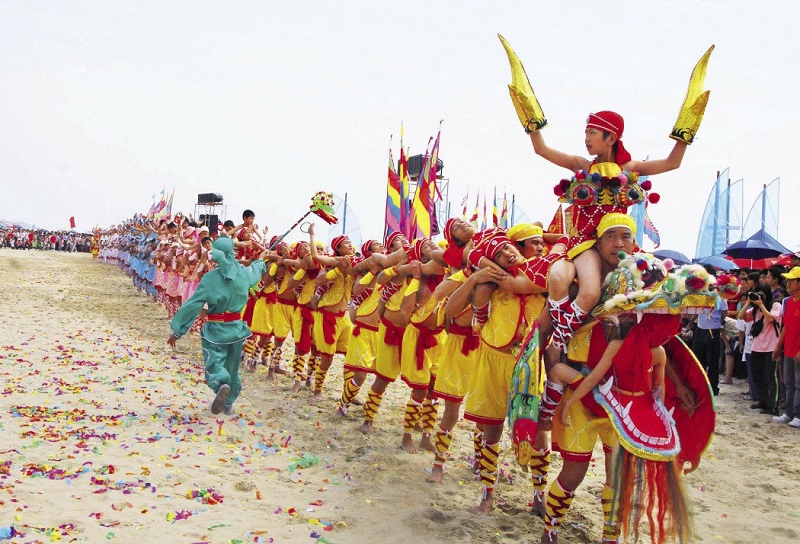
A 76-meter Human Dragon Dance group sets a Guinness World Record for being the longest Human Dragon Dance on May 1, 2007, in Zhanjiang of Guangdong Province.
The dragon is the totem of the Chinese nation, and dragon dancing is the most commonly seen entertainment during the festive season. The dance embodies the spirit of solidarity and industriousness of the Chinese nation, and symbolizes harmony between heaven and humanity. As a cultural and artistic expression of traditional Chinese folk art, the dragon dance can be seen in most places in China and among various ethnic groups during traditional festivals.
The Human Dragon Dance is a traditional group dance in Guanghua Village, Xingtan Town, Foshan City in China’s southern province of Guangdong. Guanghua is famous as the birthplace of martial arts in the south. By the middle of the Qing Dynasty (1644-1911), the dance had already gained some popularity in the region. An event that pushed the dance to its prime was a home-welcoming ceremony held in 1830 for Liang Yaoshu, a native of Guanghua, who had just won the first place in the national imperial examination. The whole village was so overjoyed at this unprecedented honor that 190 martial arts masters voluntarily performed the Human Dragon Dance to greet Liang on his returning home. Since then, Guanghua Village has performed the dance on every festive occasion, which has been passed down from generation to generation. In June of 2008, the dance was added to the national intangible cultural heritage list.
When the Human Dragon Dance is performed, between a dozen and over 100 people form a dragon-shape line which could be tens of meters long. As the shape of the dragon is formed entirely by the choreography, it is necessary for the performers to have some basic martial arts skills.
The human dragon is primarily composed of two parts: the base and the body of the dragon. The person who supports the base must be physically strong enough to support the weight of the body above him with his shoulders and waist. The person who serves as the dragon body waves red ribbons with both hands, representing the claws of the mythological creature. The traditional choreography requires a body performer to ride on the shoulders of a base performer, and then lying back on the shoulders of another base performer who is standing behind him.
Apart from a body and a base, a head and a tail are also typical features of a human dragon. The head is formed by three people: one holds the dragon horns with both hands, sits on the shoulders of the second person and the third person’s feet hook on the waist of the second person, while keeping the upper body extended forward in mid-air to act as a dragon tongue. As for the tail, it has two variants. A tail performer can keep both palms together and hold them high to make the tail of the dragon, or he can hold tail props in his hands, sit on the base performer’s shoulders and lie back while his back is supported by the head of the base performer that he is sitting on.
Each year at the Spring Festival, Guang-hua villagers gather early in the central square to secure a good spot to watch the Human Dragon Dance performance. The dance team is neatly dressed in red and yellow, and dance along to the beat of gongs and drums, showing off their dazzling moves. It is hard for the audience not to be captivated by the powerful visual and rhythmical spectacle that sends a message of hope, good luck, and happiness to everyone at the beginning of a new year.